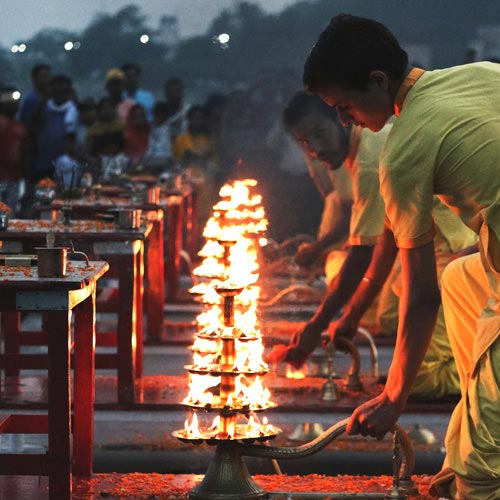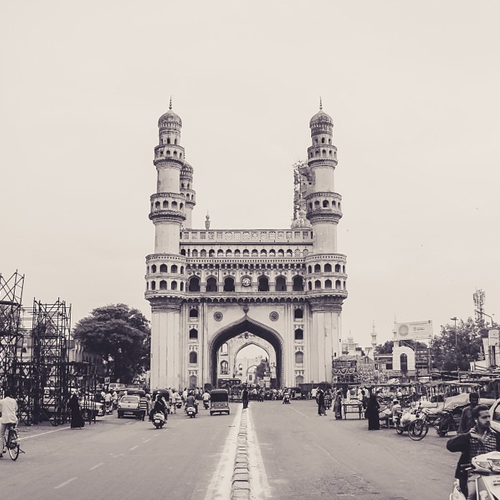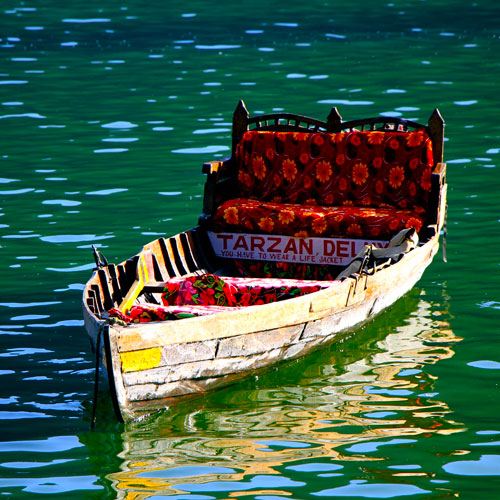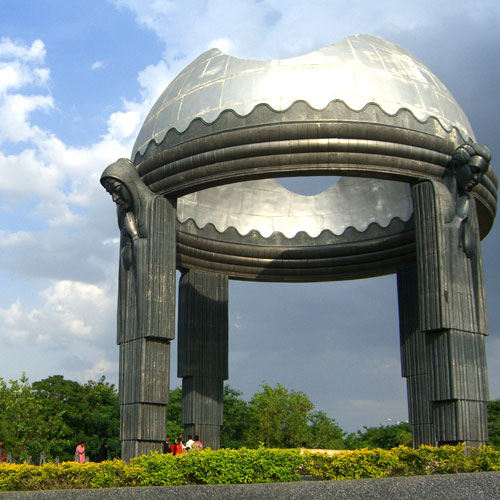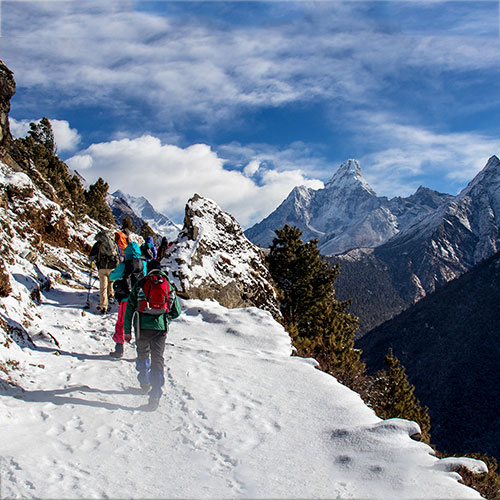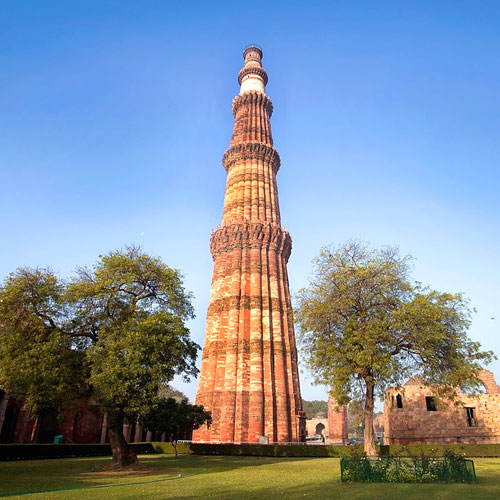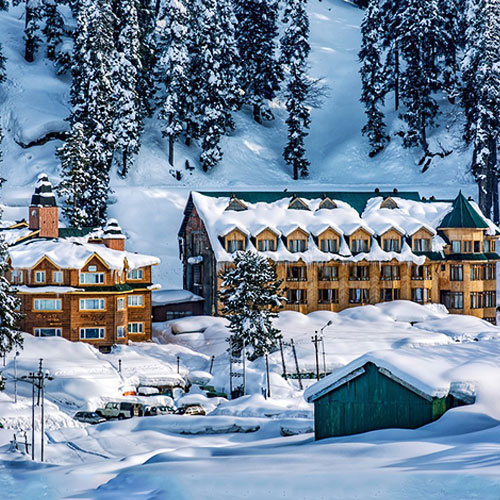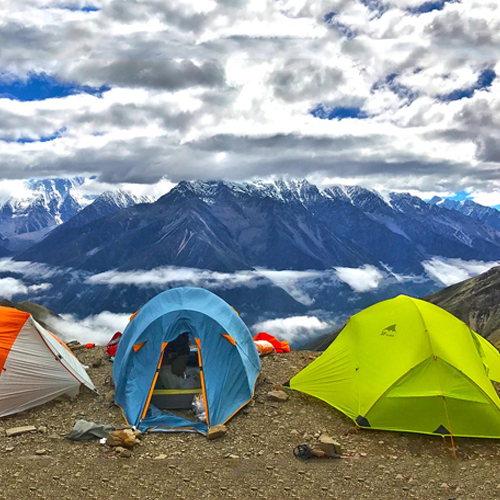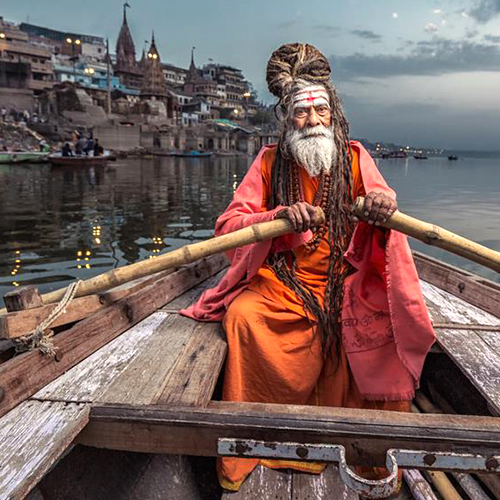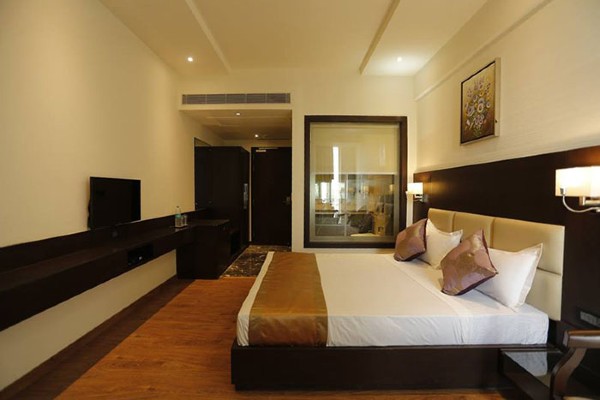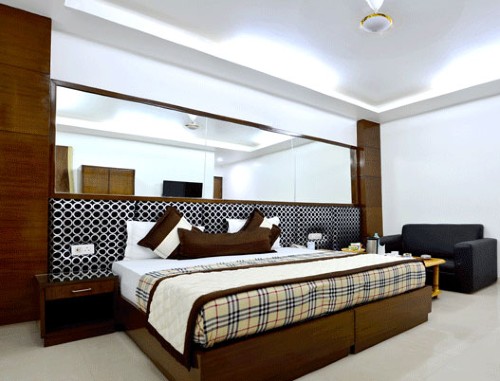Glorious Golden Triangle Tour

India's golden triangle is a tourist circuit which connects the national capital Delhi, Agra and Jaipur. People usually begin the Golden Triangle trip from Delhi, simply because this Delhi has served as a capital of various kingdoms and empires. There are places like India Gate, Red Fort, Qutab Minar ,Lotus Temple, Jama Masjid.
Welcoming, historical Jaipur has Jal Mahal ,Amber Fort, Jantar-Mantar, Hawa Mahal, Albert Hall (Central Museum), Nahargarh Fort. Jaipur holds a special place in everyone’s heart every traveler will enjoy the stay at the old halevis in the region.
Agra fort is the Gem of Mughal era. There are no unique words to express Agra. An earth-shattering symbol of love at India. Probably, no other theme tour besides Golden Triangle Tour can provide you with a full-fledged glimpse of India’s royal and cultural heritage in such a short span. The journey covers three most popular tourist destinations of India - Delhi, Agra and Jaipur.
-
Day1
Arrival - Delhi
Upon Arrival Indira Gandhi Airport Delhi, meet and greet by our representative and hand over to Driver. Then transfer to hotel to check in. Overnight in Delhi.
| |
-
Day2
Delhi - Jaipur
Morning after breakfast drive you to Jaipur. The pink city capital of Rajasthan. On arrival check into hotel. Then free and easy for shopping. In the Evening visit to Chokhi Dhani for Rajasthani traditional dinner with dance and music(optional activities). Overnight stay in Jaipur.
|
-
Day3
Jaipur
After breakfast sightseeing of HawaMahal and Amber Fort. Amber Fort, which is sparingly beautiful structure and well preserved 16th century built on four levels surrounded by ruins. Among the many splendour of the fort is a small room with ceiling covered by tiny mirrors. Also visit Water Palace(Jal Mahal), City Palace and Janther Manther (18th century astronomical observatory) with several incredible sundials and Sun clocks. Then free and easy for shopping. Overnight stay in Jaipur.
|
-
Day4
Jaipur - Fatehpur Sikri - Agra
After breakfast drive to Agra, Enroute visit FatehpurSikri, capital of Mughal empire during the rein of Mughal emperor Akbar. Distance of about 235 kms will be covered in about 5 hrs. Agra which in the 16th and 17th centuries was the capital of the grand Mughal Empire. On arrival visit the Agra Fort, a UNESCO World Heritage Site and walk through the chambers of this royal residence. The fort can be more accurately described as a walled palatial city and during Mughal times housed the state treasury and mint. Then shopping and then check into hotel. Overnight stay in Agra.
|
-
Day5
Agra – Mathura - Delhi
Early morning visit to the Taj Mahal, one the Seven Wonders of the World and a UNESCO World Heritage site. The construction of the Taj Mahal began in 1631 and it took 18 years and over 20,000 craftsmen to complete this monument in memory by an emperor for his beloved queen. Legend has it that once construction was completed, the emperor had the architects hands cut off, and blinded, so he would never be able to duplicate the structure anywhere else. After breakfast leave to Delhi. The distance of about 200 kms will be covered in about 4.5 hrs. Enroute visit Mathura Lord Krishna’s birth place. On arrival visit Akshardham Temple. Then check into the hotel. Then free & easy for shopping. Overnight stay in Delhi.
|
-
Day6
Delhi – Depature
Morning after breakfast, proceed for sightseeing of Old and New Delhi visiting India Gate, Jamia Mosque, Raj Ghat (Cremation Place of Father of Nation Mahatma Gandhi), Qutab Minar drive past Red Fort, President’s Palace, Parliament House & etc, Evening transfer to Delhi airport for your onward journey with unforgettable memories.
Inclusion
-
Accommodation with breakfast in the selected hotels on twin or triple sharing basis.
-
Meal Plan as per the itinerary.
-
Assisstance of driver cum guide.
-
All transfers and sightseeing by Air conditioned vehicle.
-
Driver allowance, Fuel charges, Parking, Toll, Interstate tax etc.
Exclusion
-
International airfare and airport taxes.
-
Travel Insurance
-
All Entrances fees
-
Tips and porter charges
-
Personal expenses.
-
Any other services not specified above



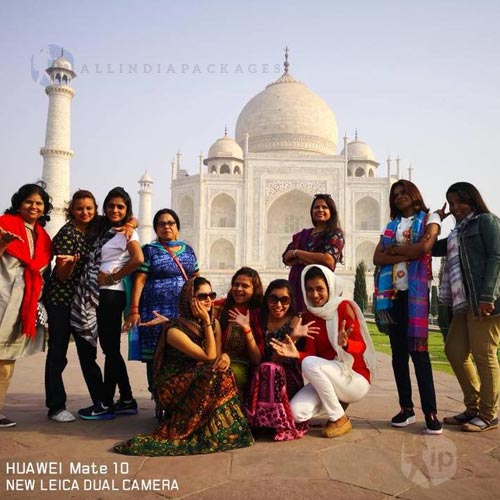

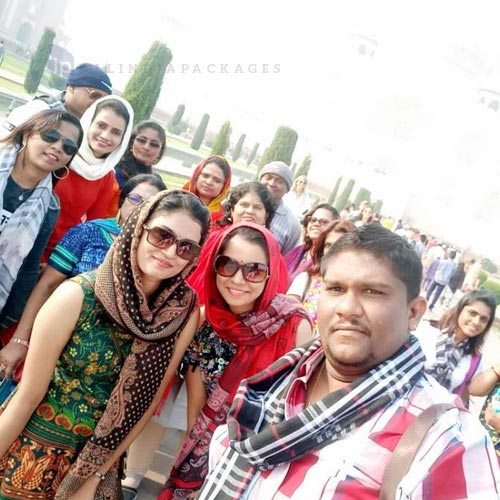

DELHI
1. Red Fort - The Red Fort is a historic fort in the city of Delhi, capital of India. Nearly 200 years, it was the main residence of the emperors of the Mughal dynasty, until 1856. It is located in the centre of Delhi and houses a number of museums. Its prime beauty prevails throughout the year. If you visit during national holidays like Independence Day and Republic Day, you can find many interesting activities and even the Prime Minister’s speech. During winter is the prime tourism season, which starts in October and ends in February. The fort is open throughout the week except on Mondays. The fort is open from 7:00 in the morning until 5:30 in the evening for sightseeing.
Weekdays: INR 60 per head for adult and INR 20 per head for children
Weekends and Holidays: INR 80 per adult and INR 30 per children
2. Qutub Minar - The Qutub Minar, a UNESCO World Heritage Site in the Mehrauli area of Delhi, it is the most popular monument in India. The red sandstone tower of Qutb Minar is 72.5 meter high, tapering from 2.75 meter in diameter at its peak to 14.32 meter at its base, and alternating angular and rounded flutings. This is a truly impressive place. The facilities are quite spread out and include not only the main tower but a mosque and several tomb monuments.
Visit Timing: Sunrise to Sunset
Entry Fee: Indian citizens: Rs. 30/- and for foreign nationals: Rs. 500. Entry is free for children up to 15 years of age.
3. Humayun’s Tomb - Humayun's tomb, this magnificent garden tomb is the first substantial example of Mughal architecture in India. The reason to build this Tomb to house the mortal remains of Humayun, the second Mughal Emperor of India. The Humayun’s tomb is the starting point of the Mughal architecture in India. This style is a delightful amalgamation of the Persian, Turkish and Indian architectural influences.
Visit Timing: Sunrise to sunset, all days of the week
Entry Fee: Rs. 10/- for citizens of India, Rs. 250/- for foreign nationals. Children up to 15 years do not require entry fee.
4. Jama Masjid - The Jama Masjid of Delhi, is one of the largest mosques in India, was built by Mughal Emperor Shah Jahan between 1644 and 1656 at a cost of 1 million rupees. This great mosque is the largest in India, with a courtyard capable of holding 25,000 devotees. The hauz, in the center of the courtyard, is an ablution tank for washing hands, face and feet before entering the main building for prayer. It symbolizes the ritual of baptism needed to enter the community of believers.
Visit Timing: 7am to 12pm, 1:30pm to 6:30pm, all days of the week
Entry Fee: Rs. 200-300
5. India Gate - The India Gate is a war memorial to Undivided Indian Army soldiers who died during World War I, located astride the Rajpath, on the eastern edge of the "ceremonial axis" of New Delhi, India, formerly called Kingsway. The burning flame is manned by members from the three Indian Armed Forces 24×7. During nightfall, India Gate is dramatically floodlit while the fountains nearby make a lovely display with coloured lights. Surrounding the imposing structure is a large expanse of lush green lawns, which is a popular picnic spot.
Visit Timing: 24 hours a day, all days of the week
6. Lotus Temple - The Lotus Temple, located in Delhi, is built in the shape of a lotus flower was completed in1986 it is set among the lush green landscaped gardens. Notable for its flowerlike shape, it has become a prominent attraction in the city. The Lotus Temple is open to all, regardless of religion or any other qualification. The temple hosts several classes from time to time to spread humanity, peace, affection, truth and courage.
7. Akshardham - Akshardham or Swaminarayan Akshardham complex is a Hindu temple, and a spiritual-cultural campus in Delhi, India. The Akshardham experience is an enlightening journey through India’s glorious art, values and contributions for the progress, happiness and harmony of mankind.
A visit to Akshardham is a spiritually enriching experience. Whether it is in realising the power of prayer, in feeling the strength of non-violence, in being aware of the universal nature of Hinduism’s ancient principles, or just in admiring the beauty of God’s abode on Earth
8. Old Delhi - Old Delhi or Purani Dilli was founded as a walled city of Delhi, India, founded as Shahjahanabad in 1639, when Shah Jahan, the Mughal emperor at the time, decided to shift the Mughal capital from Agra. It offers spectacular pieces of architecture, a mouthwatering variety of food, and a living, breathing piece of history.
Chandni Chowk and Chawri have many street joints that offer spicy and tangy chaats, dahi bhalle, tikki, kulle fruit chaat, and phirni (a sweet dish). Karim’s Place is very famous for its kebabs. Moti Bazaar is famous for shawls and pearls and Tilak Bazaar for chemicals.
9. Laxminarayan Temple - Laxmi Narayan Temple, also known as Birla Mandir, is one of Delhi's major temples and a major tourist attraction. Laxminarayan usually refers to Vishnu, Preserver in the Trimurti, also known as Narayan, when he is with his consort Lakshmi. The temple was inaugurated by Mahatma Gandhi on the condition that people of all castes will be allowed to enter the temple.
10. Rashtrapati Bhavan - The Rashtrapati Bhavan is the official home of the President of India located at the Western end of Rajpath in New Delhi, India.
11. Chandni Chowk - In the heart of Old Delhi, Chandni Chowk is a busy shopping area with markets full of spices, dried fruit, silver jewelry and vivid saris, while the narrow side streets are crowded with tiny shops selling essential oils, stationery and traditional Indian sweets. Nearby, the vast Mughal-era Red Fort now houses a museum complex, and the 17th-century Jama Masjid is a huge red-sandstone mosque with towering minarets. Located at the western end of Chandni Chowk, Khari Baoli is a street entirely dedicated to all kinds of spices, dried fruits, nuts, and herbs.
12. Jantar Mantar - Jantar Mantar is located in the modern city of New Delhi. It consists of 13 architectural astronomy instruments. It was built by Maharaja Jai Singh in the year 1724 and forms a part of a collection of five such observatories located in Jaipur, Ujjain, Varanasi and Mathura.
Visit Timing: Opens 6:00am to 6:00pm, all days of the week
Entry Fee: Rs. 15/- for Indians; Rs. 200/- for Foreign Tourists
13. Purana Qila - Purana Qila' is one of the oldest forts in Delhi and is an enthralling historical site beholding the majestic history of this city. The premises are almost in a five-mile area and there are three gates to enter the fort and also a moat nourished by River Yamuna. Purana Qila acquires a primary place in the itinerary of travellers exploring the ruling past of Delhi.
Entry Fee: Rs. 5/- for Indian Citizens, Rs.100/- for foreigners, Rs.80/- for Sound and Light Show
14. Lodhi Garden - Lodi Gardens or Lodhi Gardens is a city park situated in New Delhi, was once known as 'Lady Willingdon Park', but was renamed after India gained independence from the British. The soothing greenery of this place is a sight to sore eyes, and you can enjoy a quaint picnic here as well. Lodhi garden houses the tombs of Sayyid and Lodhi rulers.
Visiting Hours: 6:00 AM - 7:30 PM
15. Sri Bangla Sahib Gurdwara - Gurudwara Bangla Sahib is one of the most prominent Sikh gurdwara, or Sikh house of worship, in Delhi, India and known for its association with the eighth Sikh Guru, Guru Har Krishan, as well as the pool inside its complex, known as the "Sarovar." Gurudwara Bangla Sahib formerly the bungalow-sized residence belonging to Raja Jai Singh, was locally known as ‘Jaisinghpura Palace'. Later, his home was converted into a gurudwara.
Rent for AC room is 1000 INR/day. Non-AC room’s rent is 800 INR/day. No money is charged for staying inside the hall.
16. Safdarjung Tomb - Safdarjung's Tomb is a sandstone and marble mausoleum in Delhi, was built in 1754 in the late Mughal Empire style for Nawab Safdarjung. The monument has an ambience of spaciousness and an imposing presence with its domed and arched red brown and white coloured structures. The actual graves or burial chambers of Safadrjung and his wife Amat Jahan Begum are placed in an underground chamber of the monument.
Entry fees per person for Indian citizens is Rs. 15/- and for foreigners is Rs. 200/-. Entry is free for children up to 15 years of age.
17. National Zoological Park - The National Zoological Park is a 176-acre zoo near the Old Fort in Delhi, India. From biggest cats to the tiniest birds, the zoo has all kinds of animals and birds. It also holds Conservation Breeding Programmes for Asiatic Lion, Royal Bengal Tiger, Brow Antlered Deer, Swamp Deer, Indian rhinoceros and red jungle fowl. It has canteens inside for the visitors and battery operated vehicles at very reasonable prices which you could use if exhausted. But the real fun is in exploring the place on your feet. Visit this destination to reignite your curiosity in our furry friends!
Timings: 9:30 AM - 4:30 PM, Closed on Fridays and National Holidays
Entry Fee: Indians: INR 20 - INR 40, Foreigners: INR 100 - INR 200
18. Tughlakabad Fort - Tughlaqabad Fort is a ruined fort in Delhi, built by Ghiyas-ud-din Tughlaq, the founder of Tughlaq dynasty, of the Delhi Sultanate of India in 1321, as he established the third historic city of Delhi, which was later abandoned in 1327. March, April, and May are the best months for touring its enchanting ruins. Otherwise, you may visit this place in cold months of November to February. Visitors avoid coming here during the summer and rainy season.
19. ISKCON Temple Delhi - Sri Sri Radha Parthasarathi Mandir, generally known as the ISKCON Delhi temple, is a well known Vaishnav temple of Lord Krishna and Radharani in the form of Radha Parthasarathi. It represents a very unique form of architecture that will leave you spellbound for the remainder of the trip.
AGRA
1. Taj Mahal - The Taj Mahal is an ivory-white marble mausoleum on the south bank of the Yamuna river in the Indian city of Agra. Come to unfold the pages from the past to churn the charm out of its mystique and enrich your imagination about this marvel of an epic in stone, The Taj!
Everyone knows that ‘The Taj’ is one amongst the World’s Wonders!
Everyone knows that it is one amongst the UNESCO World Heritage Sites!!
Therefore, ‘The Taj’, surely, deserves your visit once and more!!!
2. Agra Fort - Agra Fort is a historical fort in the city of Agra in India. The fort is a UNESCO World Heritage site. Before the capital was shifted from Agra to Delhi, It was the main residence of the emperors of the Mughal Dynasty until 1638. Agra Fort has many secret subterranean apartments and edifices. The entire fort is interconnected through tunnels and other underground pathways. One such known tunnel is located near the Water Gate, connecting the fort to the banks of river Yamuna.
There is plenty of Mughal architecture in the city of Agra and the most important of them is Jahangir Palace and this is the biggest of all the residential buildings in the Agra Fort.
3. Tomb of Akbar the Great - Akbar’s tomb is the resting place of Akbar, Mughal Emperor. This is the mausoleum that Akbar chose for himself but could not finish it during his time. However, people choose winter, as it will be pleasing with mild climate. If you are visiting during rainy season, you will not be able to spot any animals inside the complex. The tomb also has the remains of two of Akbar’s daughters. Unlike any other Mughal tombs, the tomb is faced towards the east rather than towards Mecca.
4. Itmad-ud-Daula - This monument is considered as an inspiration for the world wonder, Taj Mahal was also named as 'Baby Taj'. However, the tomb of Itimad-Ud-Daulah is a more delicate artwork with marble lattice screens and fine carvings. If you are visiting Agra, you have to pay a visit to this abating piece of beauty, which stands as an first to every marble monument that glorifies Agra.
5. Moti Masjid - Moti Masjid is one of the Mosques that was built during Shah Jahan, is situated in the premises of the Red Fort in Agra.
6. Jama Mosque - Jama Masjid in Agra is opposite the Agra fort is one of the largest mosques in India. Every Friday, special prayers are conducted at this mosque which is attended by thousands of devotees.
Timings: 7:00 AM to 12 Noon, 1.30 PM to 6.30 PM
7. Fatehpur Sikri - Fatehpur Sikri is a small city in northern India, this magnificent fortified ancient city, 40km west of Agra, was the short-lived capital of the Mughal empire between 1572 and 1585, during the reign of Emperor Akbar. Akbar built his new capital here, including a stunning mosque, still in use today, and three palaces, one for each of his favourite wives – one a Hindu, one a Muslim and one a Christian (though Hindu villagers in Sikri dispute these claims). After Jahangir's second birthday, he began the construction of a walled city and imperial palace here. The city came to be known as Fatehpur Sikri, the "City of Victory".
8. Gurudwara Guru Ka Taal - Guru ka Tal is a historical Sikh pilgrimage place dedicated to the memory of ninth Guru Sri Guru Tegh Bahudar Ji, near Sikandra in Agra.
9. Panchhi Petha Store - PANCHHI PETHA is a reputed name in petha and namkeen & other delectable delicacies, perhaps the best that has won the heart of millions around the globe. When you are in Agra you will encounter every other shop as Panchi Petha. Beware all these are fake shops, which sell Petha at around 250-300 rs. per KG. The original panchi petha outlet is at Sadar Bazaar, Agra and at this shop regular/plain petha is Rs. 100/kg. So do not get cheated and buy from authentic outlet only.
Entry Fees:
|
NO. |
MONUMENTS |
INDIAN |
FOREIGNER/NRI |
||
|
WEEKDAYS |
FRIDAY |
WEEKDAYS |
FRIDAY |
||
|
1 |
TAJMAHAL |
50/- |
CLOSED |
1100/- |
CLOSED |
|
2 |
AGRA FORT |
50/- |
40/- |
650/- |
600/- |
|
3 |
FATEHPUR SIKRI |
50/- |
40/- |
610/- |
600/- |
|
4 |
AKBAR'S TOMB,SIKANDRA |
30/- |
25/- |
310/- |
300/- |
|
5 |
ITIMAD-UD-DAULA |
30/- |
25/- |
310/- |
300/- |
|
6 |
MEHTAB BAGH |
25/- |
25/- |
300/- |
300/- |
|
7 |
RAM BAGH |
25/- |
25/- |
300/- |
300/- |
|
8 |
MARIYAM'S TOMB |
25/- |
25/- |
300/- |
300/- |
Note:
1. No entry fee for children below 15 years (both Indian & Foreigner)
2. Tourist must carry his/her Identity Proof issued by Govt. Authorities.
3. Water bottle is allowed inside the monument. Shoe cover, water bottle, tourist guide map of Agra, battery bus and golf cart services are provided free of cost with the foreigner's entry ticket of the Taj.
JAIPUR
1. Amber Palace - Amer Fort is located in Amer, Rajasthan which is located 11 kilometres from Jaipur, the capital of Rajasthan. Amber fort was declared as UNESCO World Heritage Site is one of the most well-known and most-visited forts in India. Located high on a hill, it is the principal tourist attraction in Jaipur.
Amber Fort is open daily from 8 a.m. until 5.30 p.m. To reach the entrance at the top, you can either walk uphill, ride on elephant back, go by jeep, golf cart, or take your vehicle.
The cost is now Rs. 500 for foreigners and Rs. 100 for Indians during the day. Composite tickets, costing Rs. 300 for Indians and Rs. 1,000 for foreigners, are available. These tickets are valid for two days and include Amber Fort, Nahargarh Fort, Hawa Mahal, Jantar Mantar observatory, and Albert Hall Museum.
2. Hawa Mahal - Hawa Mahal or the 'Palace Of The Winds' located in the heart of the beautiful Pink City of Jaipur, is one of the most famous tourist attractions and a prominent landmark of the city on its rich cultural and architectural history. It is constructed of red and pink sandstone. The palace sits on the edge of the City Palace, Jaipur.
Visit Timing: Daily, 9:30 am to 4:30 pm
3. City Palace - Jaipur is the first designed city of medieval India. The city is divided into nine blocks and the royal palace is situated at the centre of the city. The City Palace complex is spread over a large area occupying one seventh of the old city of Jaipur. It has a chain of gardens, buildings and courtyards, temple and museum to give it a grand view that reflects its historical importance and magnificent royal grace.
The City Palace is open from 9 30 in the morning. The entire palace will take around one and half to two hours to visit. The best time to visit Jaipur is between October and March when it is relatively cooler.
4. Jantar Mantar - Jantar Mantar is an astronomical observatory used to measure the distances and positions of celestial objects. India has a total of five such observatories the largest of which is in Jaipur. The instruments at the Jaipur Jantar Mantar are made of stone and are very large structures. To ensure accuracy the structures were first made out of wood and the measurements were adjusted. Once the dimensions were perfected the construction was replicated in stone to give us the magnificent Jantar Mantar.
5. Jal Mahal - Jal Mahal is a palace in the middle of the Man Sagar Lake in Jaipur city. This majestic scene makes the Jal Mahal Jaipur’s most photographed monument but unfortunately the exploration of the actual palace is off restrictions to the majority of visitors to be transformed into an ultra exclusive restaurant. A typical visit to the Jal Mahal will be less than 30 minutes, enough time to take some photos.
6. Nahargarh Fort - Nahargarh Fort stands on the edge of the Aravalli Hills, overlooking the city of Jaipur in the Indian state of Rajasthan. Along with Amer Fort and Jaigarh Fort, Nahargarh once formed a strong defence ring for the city. There is a food court and a restaurant at the top of the fort with an excellent view, Padao.
Visiting Time: All days 10:00 AM - 5:30 PM
Entry Fee: INR 200/- for Foreign Tourists and INR 50/- for Indians
7. Jaigarh Fort - Jaigarh Fort is situated on the promontory called the Cheel ka Teela of the Aravalli range; it overlooks the Amer Fort and the Maota Lake, near Amer in Jaipur, located at a distance of 15 kms from the Pink City of India.
8. Sheesh Mahal - Sheesh Mahal is one of the most exciting feature of this fort which is decorated with thousands of mirror tiles as well as colored glasses on its wall as well as on ceiling. The literal meaning of Sheesh Mahal is “mirrored”. This Mahal brings to life with thousands of flickering reflections. The pillars are also designed very well, out of which one has uniquely designed flower carved at its base, which shows different colour of flowers when we see from different angles.
9. Johri Bazar - Johri Bazar is a wide cluster of shops in the older part of Jaipur city, shops nestling close together in a row selling anything that human imagination can dream of. From clothes, fabrics, quilts, shoes, to dry fruits and jewellery, the bazar is one of the favourite destinations in Jaipur just to take in the varied colours and wares on display. If shopping is exhausting, one can drop in to Lakshmi Mistann Bhandar for some snacks then walk a few leisurely paces to check out Hawa Mahal just across the road. The traffic is maddening, the din is tremendous but no one can possibly be tired of Johri Bazar. At night the shops are illuminated and that is such a glorious sight. A must visit in the city.
10. Jhalana Safari Park - Jhalana Safari Park is the best place to witness the Leopards and many other wild animals. It's a fantastic place away from the City. Enjoy a day from the hustle bustle and evidance the wildlife. You can see Leopards, Hyena, Blue Bull, Deer, Peacocks, Monkeys and many other creatures. Come and explore the Hidden wildlife area of Jaipur. Sprawling forest reserve with safari tours of wildlife, including leopards, jackals & civets.



